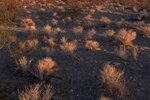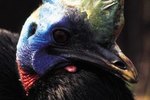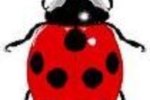Chipmunks are cute and generally harmless animals. However, in their quest for food they can damage flowers and flower bulbs. There are several methods garden owners can use to protect their plants that do not involve harming the animals. These range from using natural items as repellents to relocating the chipmunks.

Make the plants inaccessible. Cover newly planted flower bulbs with ¼-inch mesh boxes. Cover the ground around these boxes with 1-inch galvanized mesh, then cover the mesh with a light layer of soil. Insert about one foot of mesh into the ground around the bulb to protect it from tunneling chipmunks. In "Squirrel Proofing Your Home & Garden," Rhonda Massingham Hart also suggests cutting the mesh to fit and placing it over potted plants.

Select plants that are unattractive to chipmunks. In "Deer-Resistant Landscaping: Proven Advice and Strategies for Outwitting Deer and 20 Other Pesky Mammals," author Neil Soderstrom suggests planting flowers that chipmunks do not like, such as plants in the narcissus genus. These plants contain calcium-oxalate crystals and toxic alkaloids that repel chipmunks and many other animals. He also suggests using Narcissus plants as shade and chipmunk-repellents for newly planted bulbs.

Surround plants with a repellent in the spring. Spread a mixture of crushed seashells, crushed oyster shells and red pepper flakes around the base of the plants.

Consider relocating the chipmunks. Place large cage traps in the flowerbeds to catch the animals then release them in an area with plenty of food. Author Neil Soderstrom suggests doing this in the summer when there is an abundance of seeds. Check your local Fish and Game Department for information on release sites.
References
- Squirrel Proofing Your Home & Garden; Rhonda Massingham Hart; Storey Publishing, 1999
- Deer-Resistant Landscaping: Proven Advice and Strategies for Outwitting Deer and 20 Other Pesky Mammals; Neil Soderstrom; Rodale Books, 2009
Photo Credits
-
Oralleff/iStock/Getty Images
Writer Bio
Tina Amo has been writing business-related content since 2006. Her articles appear on various well-known websites. Amo holds a Bachelor of Science in business administration with a concentration in information systems.



